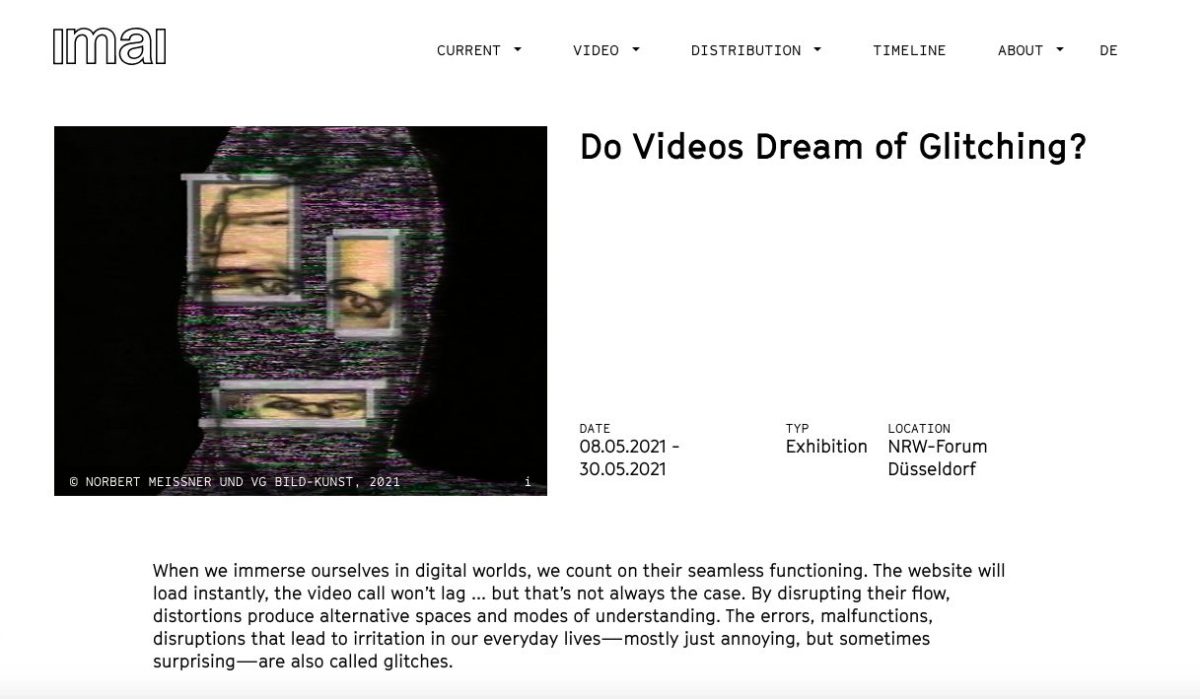Online screening curated for the Inter Media Art Institute (IMAI) Foundation, Düsseldorf, Germany with Caroline Glock, Evita Verbrugge, Heiko Schmid, and Ugo Pecoraio.
Curatorial statement
When we immerse ourselves in digital worlds, we count on their seamless functioning. The website will load instantly, and the video call won’t lag … but that’s not always the case. By disrupting their flow, distortions produce alternative spaces and modes of understanding. The errors, malfunctions, and disruptions that lead to irritation in our everyday lives—mostly just annoying, but sometimes surprising—are also called glitches.
A glitch can be intentional or occasional. It celebrates the inefficient, the irrational, and the annoying disruption. It often shows illusionistic traits reminiscent of phantasmagoria, a term borrowed from stage magic and the history of technology. Therefore, it has been employed by a variety of artists as an aesthetic and conceptual tool. We argue that some video artists use glitching as an emancipatory strategy that enables a deeper critique of technology. We argue that phantasmagoric video glitches reveal hidden (power) structures within technology, media, and politics that reach beyond their technological mechanics.
The works we selected for this screening question the boundary between malfunction and manipulation. Where does illusion collide with dysfunction? What if we lived in a phantasmagoric reality and could only dream of glitches that help us escape to what’s beyond the illusion?
Text: Caroline Glock, Chiara Giardi, Evita Verbrugge, Heiko Schmid and Ugo Pecoraio
Programme
Steina and Woody Vasulka, Noisefields, 1974, 10:52 min.
Franziska Megert, Sweet Dressing, 1983, 03:26 min.
Paul Garrin, Free Society, 1988, 4:03 min.
Raphael Montañez Ortíz, Busy Bodies, 1997, 8:57 min.
Ulrike Rosenbach, Das Feenband, 1983, 15:17 min.
George Barber, Effervescence, 1995, 1:31 min.
Norbert Meissner with Mike Krebs, Dialog, 1987, 4:45 min.
